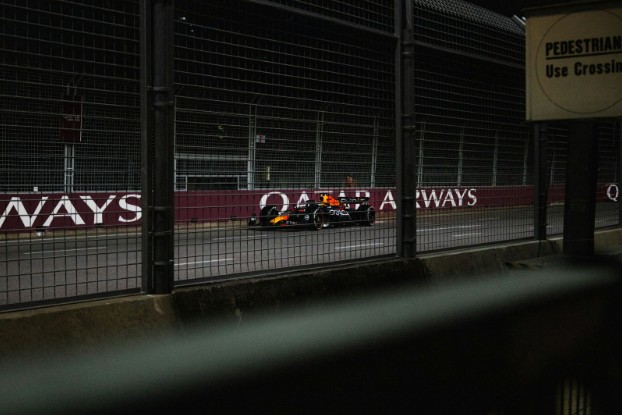The Singapore Grand Prix shook up the track order more than anticipated after sparking a feud within the McLaren team. This stirred up a debate on whether or not Lando Norris would be penalized for crashing into his teammate, Oscar Piastri, on lap one. This sole incident has led to a lot of questions regarding the team and their strategy this season.
On-Track Collision Broader Implications
Following Singapore, a lot of motorsport enthusiasts around the world were interested in how this crash could change the sentiments for this team. Motorsport punters questioned whether Norris or Piastri could be regarded as good bets in future races. Betting websites have already responded to shifts in team form, etc., through their markets, and fans are paying keen attention to the impact qualifying results and lap times have on each driver’s value. With odds hovering around +150 for Norris and +220 for Piastri in upcoming events, many bettors are turning to safe NV betting options, which offer competitive odds and flexible payment methods, to gauge how internal dynamics could impact betting lines. The crash raises concerns over Norris’ confidence in his offensive skill and whether Piastri will lose his momentum going forward.
McLaren quickly did a report with management deciding that Norris would be responsible for what occurred, but they still want to maintain the integrity of fair racing among the drivers. The fact that Norris admitted that he would be punished until the end of the season proved that this was not a mere reprimand.
The Team Response and Incident in Singapore
Norris had already made a bold move in the race, trying an inside move which led to contact. He then cut a Red Bull player and, in the corrective action, collided with Piastri, which temporarily shook the championship leader. Although there were no external punishments, the internal audit revealed that McLaren found value in accountability.
The leadership of the team, led by Andrea Stella and Zak Brown, failed to intervene on the track to compel a change of positions. They defended that the first jolt Norris had with Verstappen was part of the sequence of events, and direct orders were not so obvious. Stella clarified that the contact was an outcome of a bigger racing scenario and not an intentional action.
Norris Accepts Accountability
Since the beginning of team debriefs, Norris owned up to the collision. He said that the contact was small, but it could have been avoided. He acknowledged that measures would be checked and that he would bear a responsibility of burden throughout the season. He emphasized that he knew the danger not only to Piastri but also to his own championship hopes. Norris repeated the same in the context of accepting the consequence that the wider approach they bring to competitive racing events would not change. The engagement and the manner in which we go racing with Piastri, he said, would be as usual.
Long-term Vision for the Title Fight
This crash comes at a critical point in the title fight. Piastri is ahead of Norris by 22 points as the season approaches its end. Any spot or sense of internal division might move the tide. When the consequences limit the flexibility of Norris in car set-up, strategy, or aggression in the race, they may indirectly benefit Piastri. Conversely, the fact that McLaren gave both drivers freedom indicates that they trusted them to handle tension. Both Zak Brown and Stella confirmed that the crash would not alter the racing structure.
Finding a Balance Between Team Unity and Rivalry
The problem that McLaren faces now is how to maintain internal trust and, at the same time, enable healthy competition. What is called the Papaya Rules, which is the knowledge of boundaries of intra-team contact, has been put to the test again. Norris and Piastri have to balance their competition with the larger objective of maximizing team points in the fight for the constructor’s title.
The subtle nature of the repercussions may be intentional. Should there be explicit punishment, such as strategy privileges, compulsory position swaps, or restrictions on race tactics, they might lead to an increase in tension or contribute to the advent of biased narratives.
Conclusion
The incident involving Lando Norris and Oscar Piastri in Singapore was not merely a racing incident. It was a challenge of balance, trust, and leadership at McLaren. The fact that Norris took responsibility and was ready to face consequences is a sign of maturity, whereas the fact that McLaren chose to allow both drivers to keep racing is an indication of their trust in the team structure. This scene can have a ripple effect on the rest of the season. In case the harmony prevails, McLaren can come out stronger.

